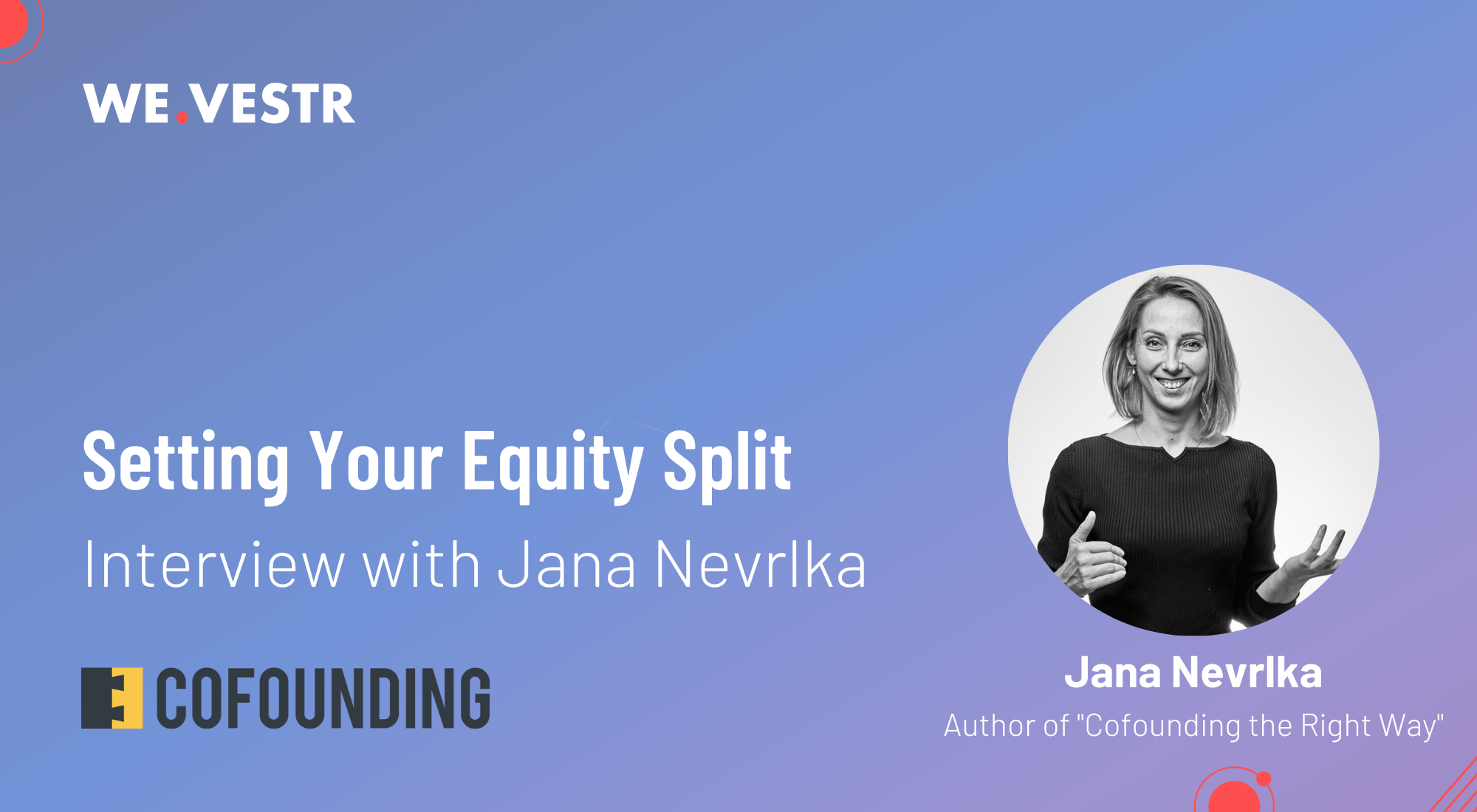Setting Your Equity Split
An interview with Jana Nevrlka on methods for how cofounders can split their equity fairly.

Jana Nevrlka is the founder of Cofounding, as well as the best-selling author of 'Cofounding the the Right Way'. Check out the interview below for her advice on how cofounding teams can allocate their equity.
Thanks for joining us Jana! What are the various equity split options that you often see cofounders consider?
There are many ways to split company equity as cofounders, but the simplest way to outline equity split approaches is "one for all/all for one" or "proportionate to contributions". Put a different way, cofounders either split their equity equally, or they divvy it up proportionate to what each brings to the table.
Most important here is there is not a "right answer", and cofounders should decide based on their situation and what's best for the company.
What are some of the pros and cons of an equal equity split?
An equal equity split is a suitable option for two groups of cofounders:
- Cofounders who have contributed roughly the same amount of capital or time (and believe this will be also true for the future).
- Cofounders who feel that their contributions, even if they are unequal at the time of cofounding, will eventually even out. For example, one of the cofounders funds the company, and the other spends time later on.
While an equal equity split can work - and has worked for some startups - I caution founders that it can often lead, down the line, to unfair equity splits and team break ups.
Also, it can be a red flag for investors, especially if the decision was made to split equity equally to avoid a tough conversation. If you do decide to go with an equal split, make sure you document the reasons why and communicate well with future investors.
What are some of the pros and cons of a proportionate equity split?
For founders who believe that equity is a reward, a proportionate equity split is a more suitable way to go. The important thing here is to ensure you have a simple and transparent way of measuring how and when equity is rewarded.
A nice framework for such dynamic equity is the Slicing Pie Method. The main benefit of this method is that it provides a transparent and simple methodology to measure founders contributions - which adjust automatically with the contributions in time. The additional time element is why it is often considered the fairest equity split method there is.
The basics of the Slicing Pie Method are:
- Assign a multiplier value to various contributions of a founder (cash, time, intellectual property, etc.).
- As contributions occur during the early days of the company, equity is rewarded based on the previously agreed and transparent inputs/contributions of the founders.
- The founders' contributions during the period when the company cannot pay them a fair market salary are thus the base for the cap table allocation. This method is then ideally used until the company raises sufficient funds or organically reaches break even.
Dynamic equity splits create an environment of fairness for cofounders, and change with the life and context of the company. There is no need to have difficult renegotiations of equity splits that no longer are fair for the team - the equity split adjusts fairly itself, based on the rules that all founders agreed on at the start. Plus, the direct link of equity as a reward can also motivate contributors and drive traction in the early days of a startup!
Ultimately, the best advice I can give to founders is to first assess which of these approaches suits their situation, and then to take the time to do it right.
Sign-up for the WE.VESTR newsletter below to learn more about how WE.VESTR and the Cofounding teams are collaborating on webinars and more.
To learn more about Jana and the Cofounding team, visit their website here.
